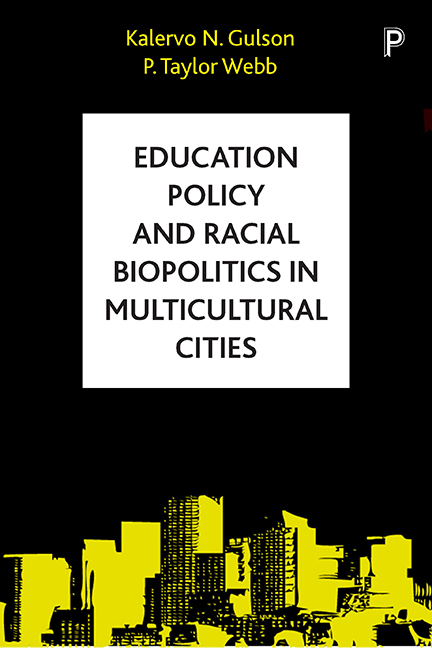Book contents
- Frontmatter
- Contents
- Notes on authors
- Acknowledgements
- Foreword
- Introduction: education policy and multicultural cities
- One Policy events
- Two Policy and biopolitics: the event of race-based statistics in Toronto
- Three The (micro)politics of racial neoliberalism With Viviana Pitton
- Four ‘Up in the northwest corner of the city’: the city, race and locating the school
- Five Difference and recognition
- Six Policy events, race and the future of the city
- References
- Index
Two - Policy and biopolitics: the event of race-based statistics in Toronto
Published online by Cambridge University Press: 05 April 2022
- Frontmatter
- Contents
- Notes on authors
- Acknowledgements
- Foreword
- Introduction: education policy and multicultural cities
- One Policy events
- Two Policy and biopolitics: the event of race-based statistics in Toronto
- Three The (micro)politics of racial neoliberalism With Viviana Pitton
- Four ‘Up in the northwest corner of the city’: the city, race and locating the school
- Five Difference and recognition
- Six Policy events, race and the future of the city
- References
- Index
Summary
I think … [the establishment of a Black-focused school] took so long because we’re all very comfortable, and we’ve become very complacent in how we treat students in our schools, and more specifically, how we treat students of colour within our schools. It has been suggested time and time and time again, and we will have a shooting in a school, we will have a death in a school, and somebody else will recommend … [a Black-focused school], and everybody says, ‘yeah, great idea! We really should deal with this because students’, Black students’ self-esteem is down a hole and we need to do something about it’. And we talk and we nod and we smile, and then we forget about it. (Weiss, 2010: film time 11.00–11.56)
There was momentum to introduce Black-focused schooling in Toronto in the early 1990s, assisted by the election of the social democratic New Democratic Party at the time. In 1991, a Black Secretariat was formed by the provincial government, and ideas about Black-focused schooling were proposed in 1992 by a multilevel Ontario government working group, the Four-level Government/African Canadian Community Working Group. As part of recommendations in their report Towards a new beginning, the working group proposed a targeted programme called ‘Focussed School’ to be implemented in schools that had high percentages of Black/African Canadian students in each of the cities making up Greater Toronto (Ontario Government/African Canadian Community Working Group, 1992).
The arguments for Black-focused schools in Toronto emphasised the need for a Black-oriented curriculum as an intervention into ongoing educational and social disadvantage for Black students. This meant arguing for curriculum change in existing public schools in addition to proposing separate ‘Black-focused’ schools (Dei, 1995; James, 2011). However, by the mid-1990s and early 2000s the idea of Black-focused schooling had entered a hiatus, with a decline in focus on racial issues brought about by a combination of a change in provincial government in 1995, with a Conservative government in power until 2003, and the dismantling of the Ontario Anti-Racism Secretariat by the incoming government, and the reorganisation of the Greater Toronto School District.
- Type
- Chapter
- Information
- Education Policy and Racial Biopolitics , pp. 35 - 52Publisher: Bristol University PressPrint publication year: 2017



